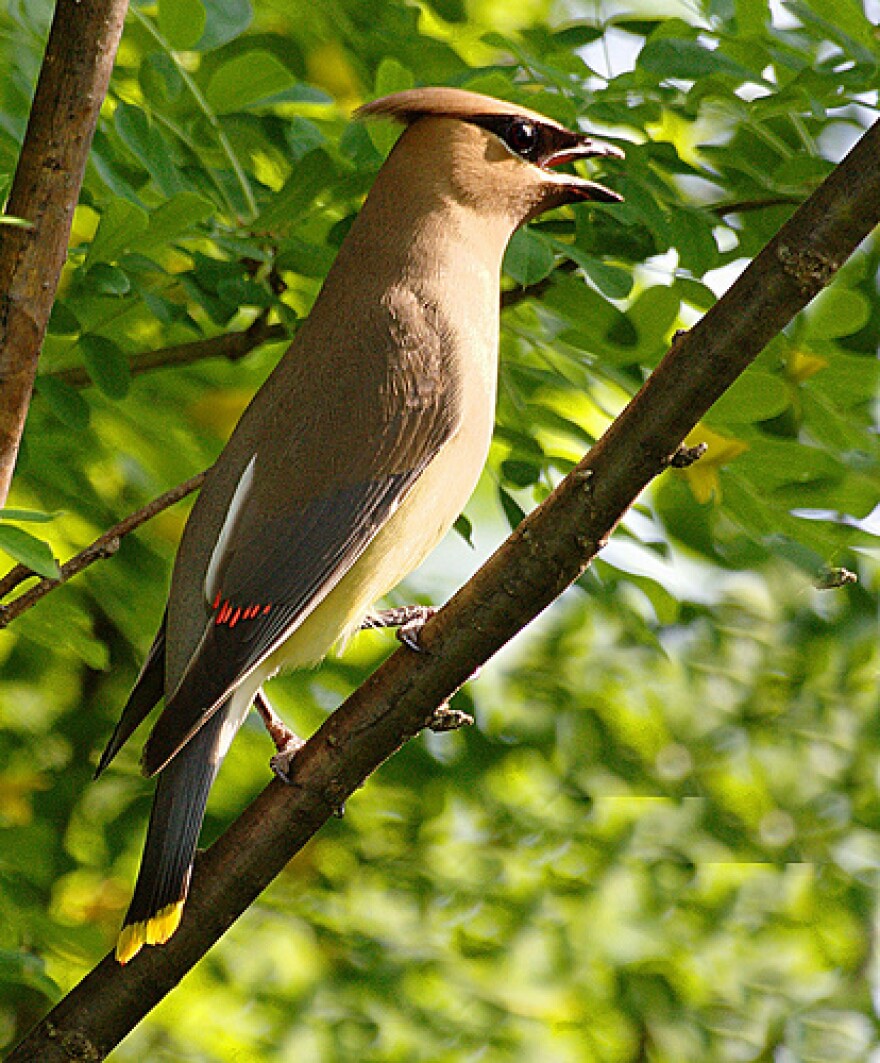May brings apple blossoms, a universal favorite—whether in hillside orchard or backyard crabapple. They're also favored by one of the most elegant songbirds of all, cedar waxwings. They're a social species but sedate and quiet as birds go—easy to miss despite traveling in flocks.
Often the best way to know they're around is by their song. It's subtle, admittedly, but worth learning. Once alerted by their song, here's what you might see: male and female waxwings exchange blossoms bill-to-bill as part of a courtship ritual when winter flocks pair off for the breeding season ahead.
One apple tree can be crowded with cedar waxwings, vibrating with their sibilant song. Blossoms are plucked and passed back and forth as a pair hops close then apart, then close again. Sometimes a third waxwing lands between a courting couple as potential interloper. I've also seen waxwings pass blueberry blossoms and willow seed catkins back and forth, but apple blossoms far more often.
Cedar waxwings are remarkable in looks as well as behavior with a smooth tan plumage that resembles velvet more than feathers, a black mask, a windblown crest, a tail seemingly dipped in yellow paint and a small red wing spot.
People invariably gasp when they see cedar waxwings up close for the first time, encountered on a field trip or even if the first sighting is in a field guide. When seen passing blossoms, or berries, or willow catkins, the bonding of human to waxwing can last a lifetime.








